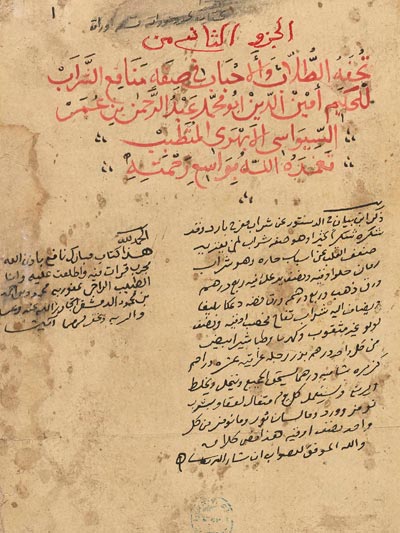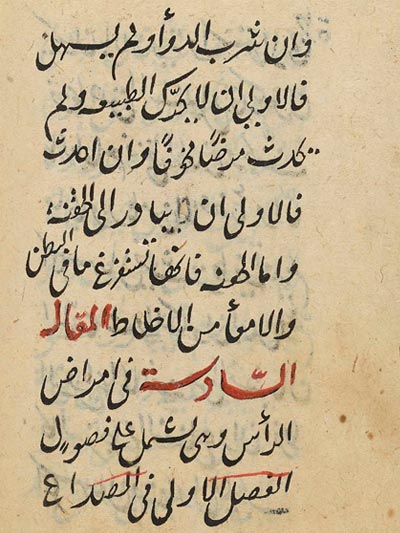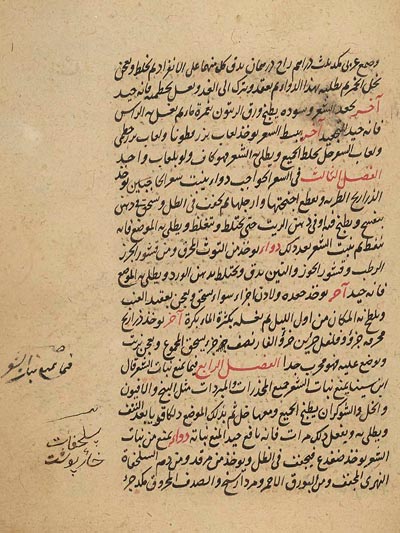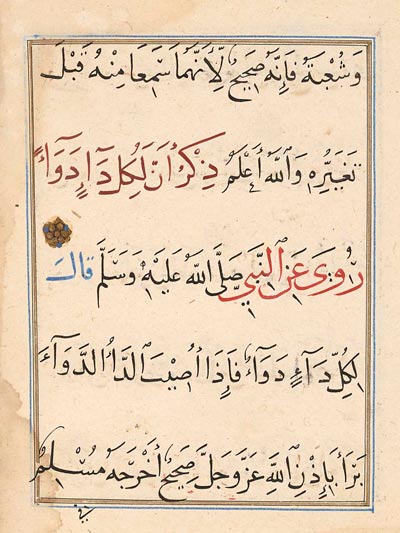The five Islamic manuscripts included in this exhibition reflect a continuous cultural tradition in the treatment of paper, bookbinding, and the artistry of calligraphy and illumination, all of which are features that transcend the conventional barriers of language and nationhood.
The manuscript transmission of medical knowledge was revitalized in Western Europe when Arabic treatises of medicine were translated into Latin from the eleventh century onward. These translations were undertaken in the so-called linguistic borderlands — broadly defined as regions populated by bilingual or even trilingual communities — from the eleventh century onward. Essentially, there were three distinctive areas where these multilingual populations could be found: the Latin Kingdoms established by crusaders in the Near East, Italy, and Spain. For example, among the Near Eastern translators we should mention Stephen of Antioch (fl. 1st half of 12th c.) and Philip of Tripoli (fl. 2nd half of 13th c.). In Italy, the output of Constantine the African (d. ca. 1087) was outstanding. Originally from Carthage, Constantine spent thirty-nine years traveling the Islamic world, becoming a monk at Monte Casino, where he wrote most of his translations. And in Toledo, Spain, Gerard of Cremona (d. 1187) was probably the most productive translator of all, with sixty-eight translations attributed to him.






